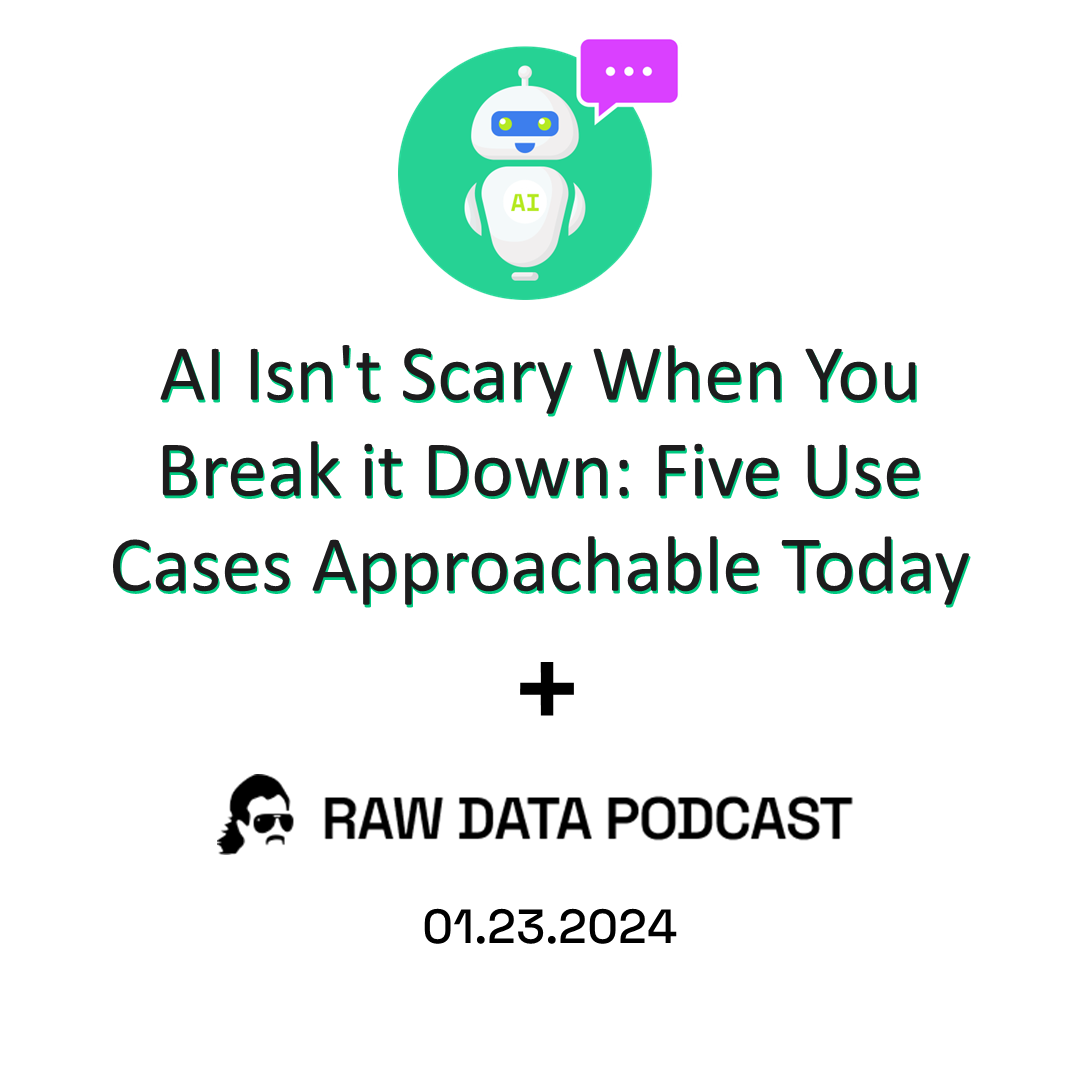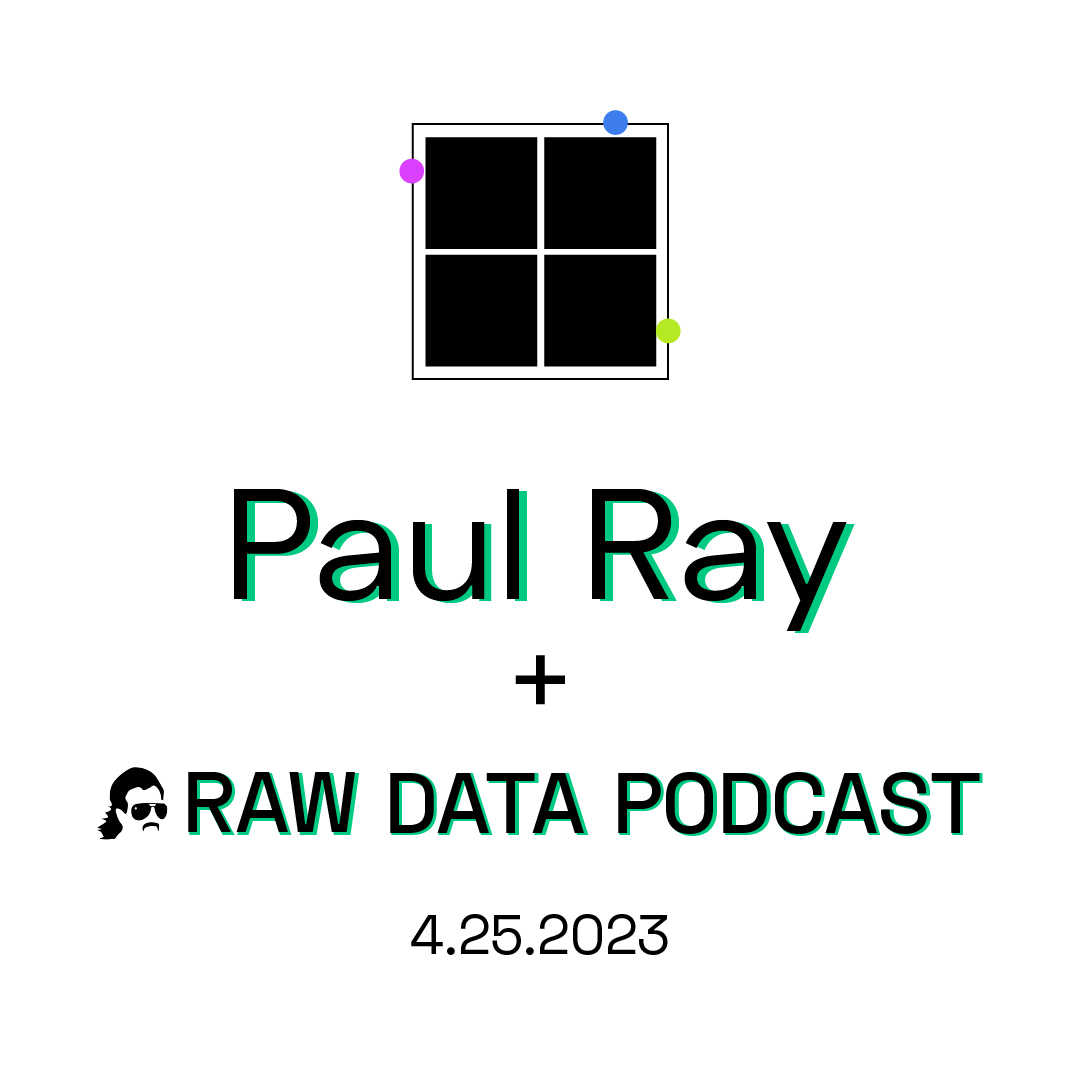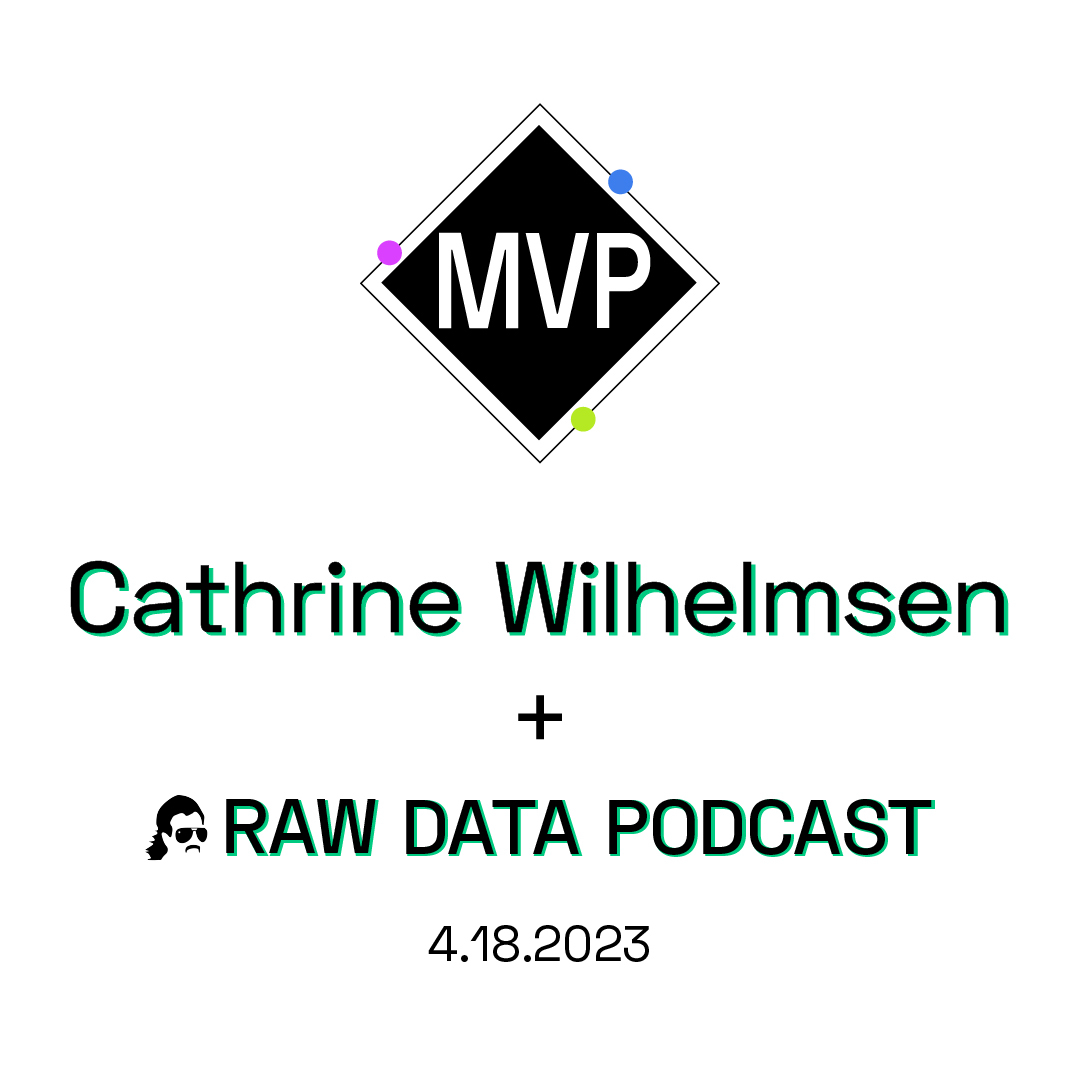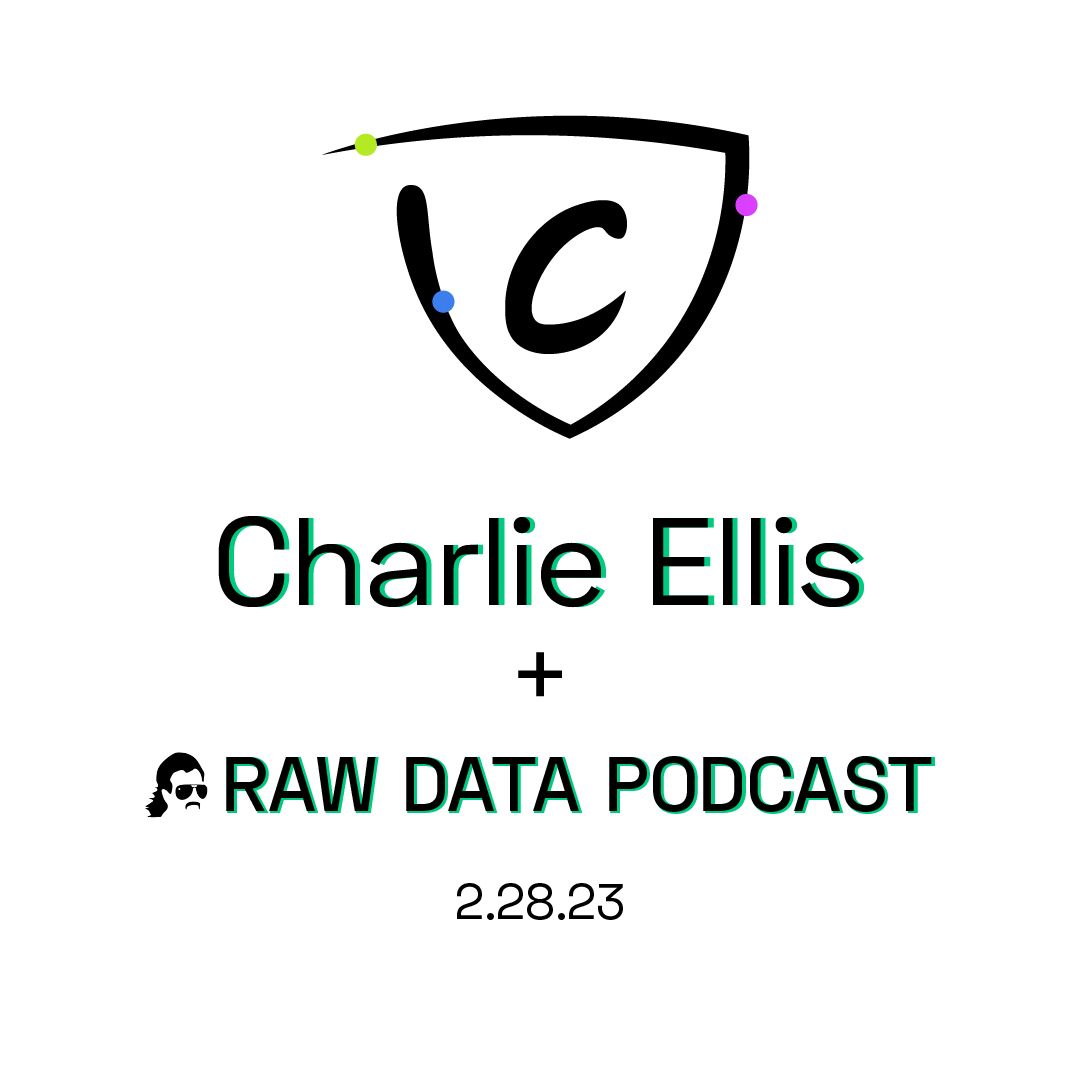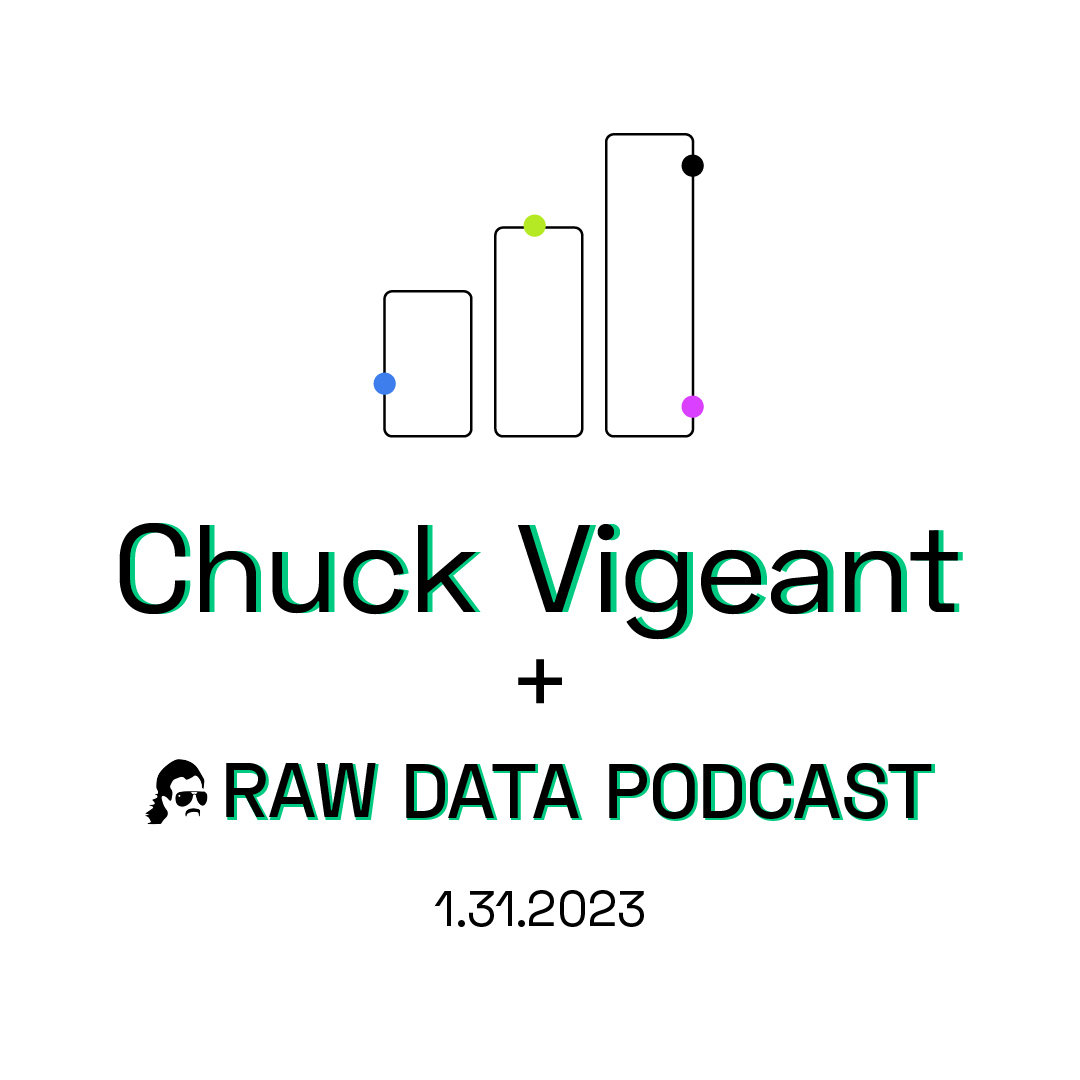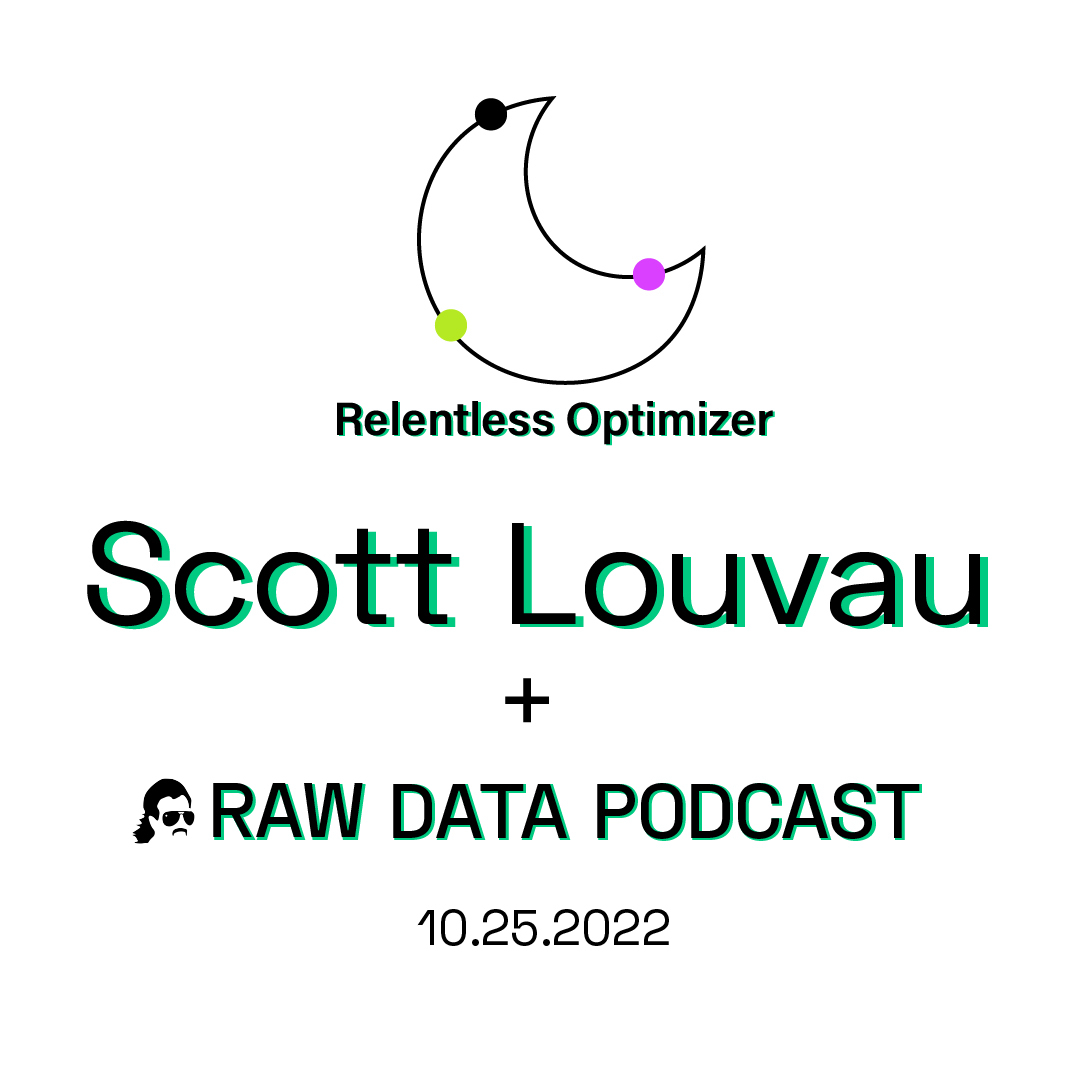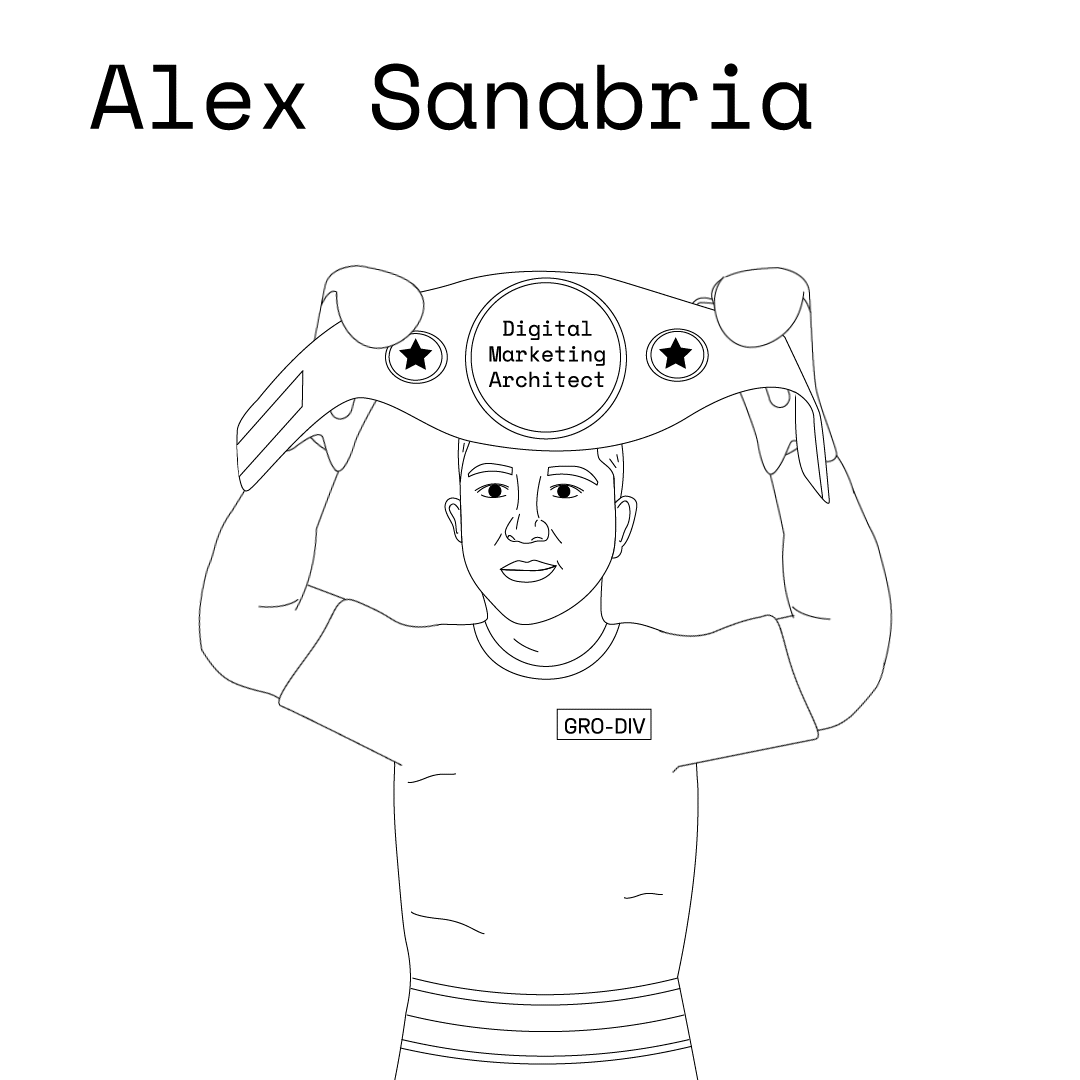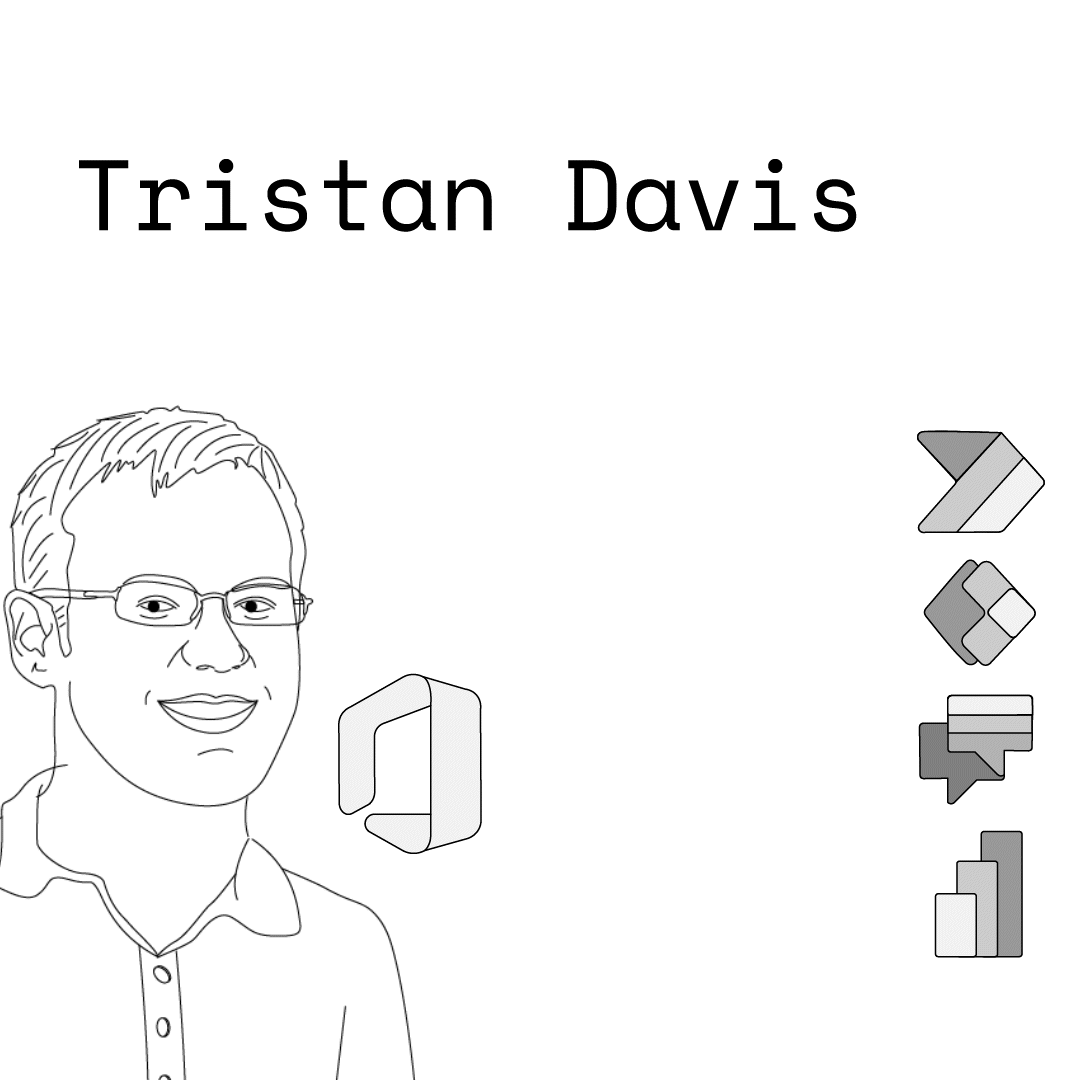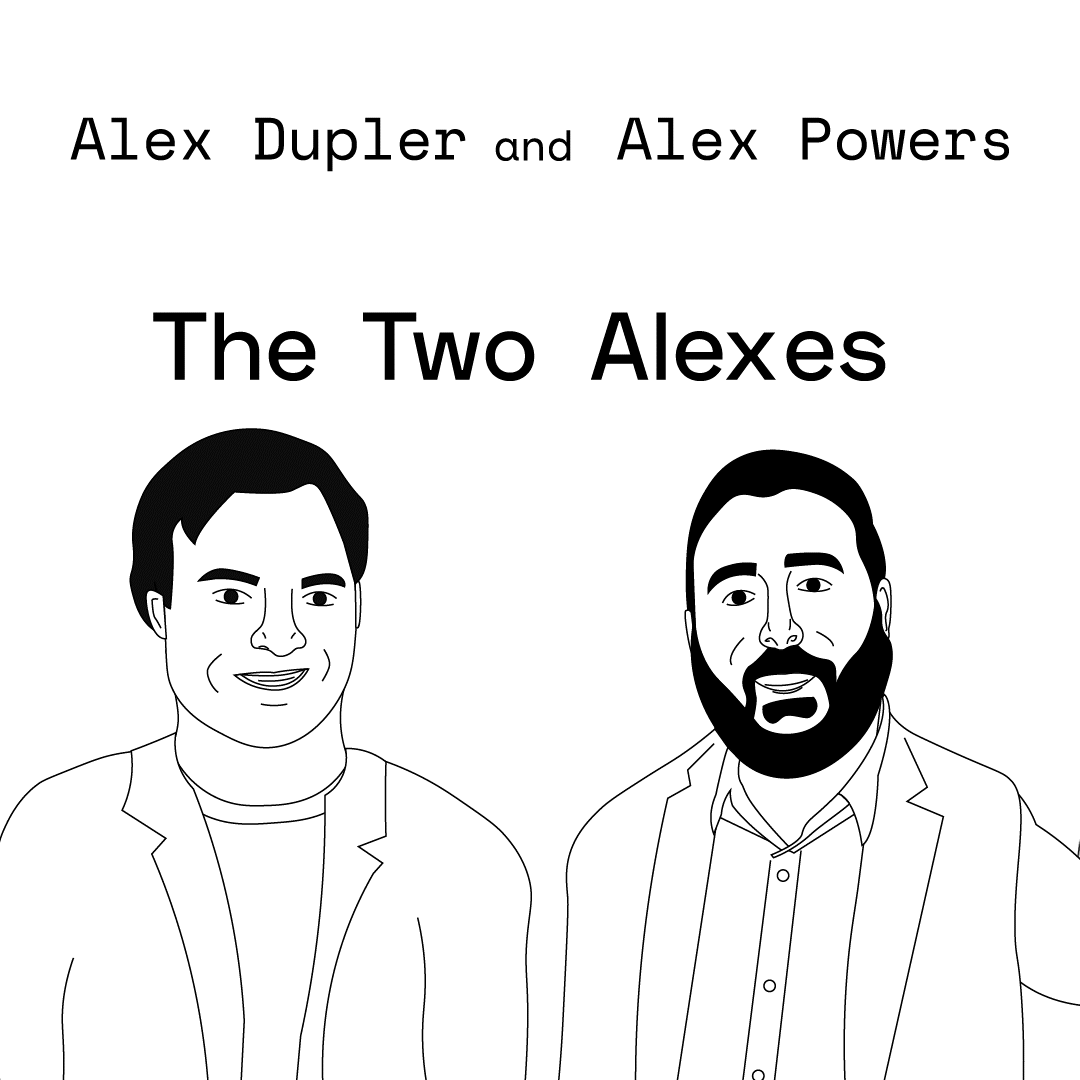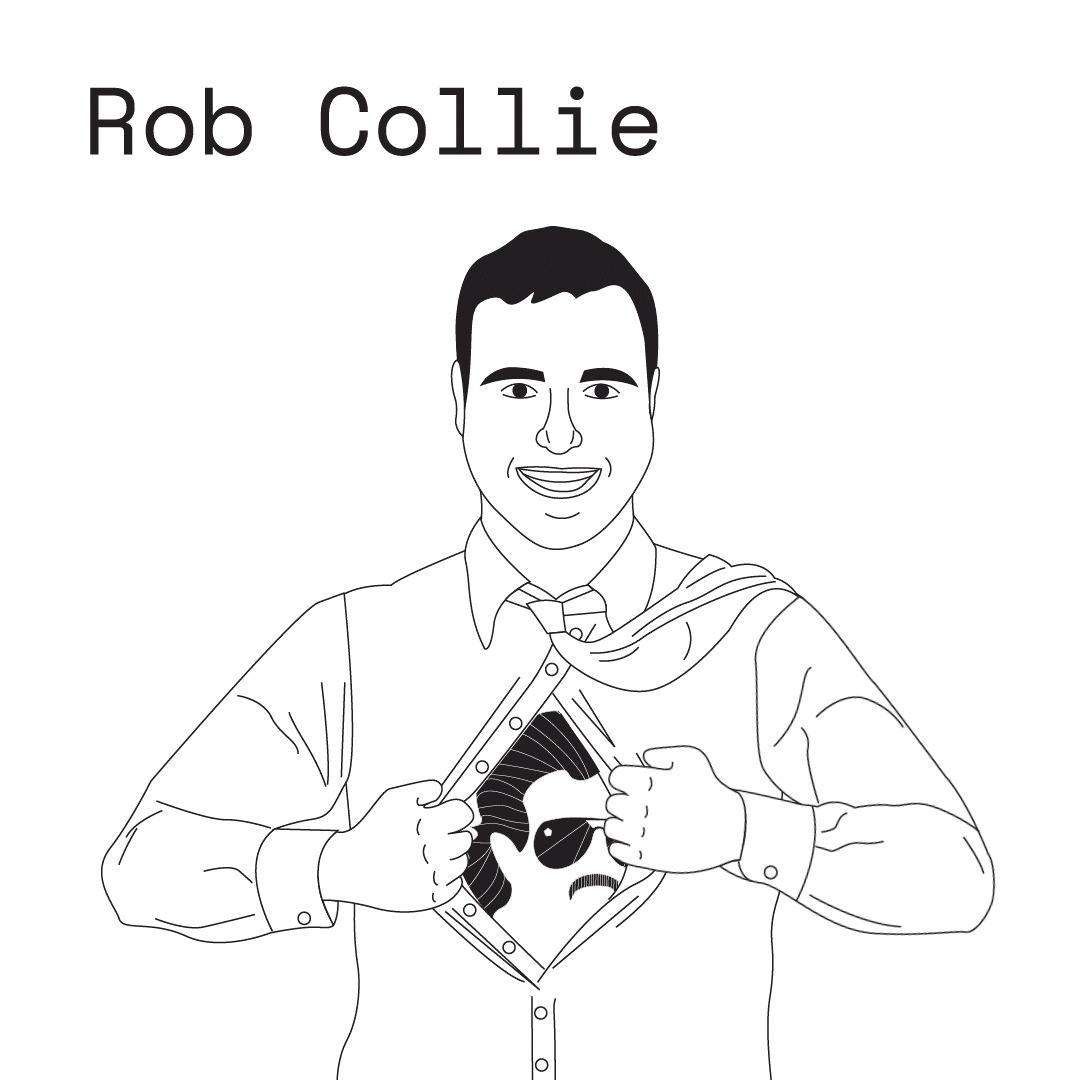
Raw Data By P3 Adaptive
Mailbag #1: Python, Fabric, and Mullets oh my!
Listen Now:Grab a cup of joe and settle in, data heads. This overflowing mailbag is packed with piping hot Q’s on all things data, tech, and working in the analytics trenches.
We’re giving you the inside scoop on our iconic Mullet Man branding, our ride-or-die philosophy on learning new tech, and why we take a faucets-first approach to data projects. Plus we’re unpacking the origin story behind Rob’s OG DAX book, the future of Power BI Embedded, and the exhilarating experience of working at P3.
You’ll also get Rob and Justin’s candid take on battling FOMO and imposter syndrome in an ever-changing Microsoftverse. We’re keeping it real on why recurring Excel data dumps are trouble waiting to happen and how to avoid burnout when MS rolls out the next hot tech.
Stick around for hot takes on data warehouses vs data lakes and the ideal conditions for employing proper data architecture principles. We’ll give you the DL on our spicy new website, P3’s true guiding values, and more behind-the-scenes gossip than you can shake a mullet at.
The mailbag overfloweth, but there’s still more Q’s where these came from! Join the LinkedIn Steering Committee to ask your questions for our team to answer in an upcoming episode. For now, sit back and enjoy the ride as we crack open this bundle of burning data questions. The Mullet Man cometh!
Rob Collie (00:00): Hello friends, and welcome to Mailbag episode number one. So we're going to be doing these about, I don't know, once or twice a month, depending upon how many questions we get. And by the way, those questions basically 100% come from the LinkedIn group. If you haven't joined the LinkedIn group, just search for Raw Data by P3 Adaptive on LinkedIn, because we love questions. Speaking of questions, we've got a great crop of them here for our inaugural mailbag, ranging from things like, do I need to know Python and SQL to do fabric? Or maybe we should ask it in reverse. Do I need to know fabric to do Python and SQL? Some people wanted to know the origin story of the book, AKA my book. Got a question about how to handle the craziness and all the duplication involved in a multi-tenant power BI embedded environment.
(00:45): Really great personal question. How do you stay motivated in the face of all of the changes that are coming in all the time, seemingly invalidating all the things that you already know, or invalidating your relevance as a professional? Spoiler alert, it doesn't invalidate any of that, but it certainly feels like it. Got a great question about export to Excel and its 500K default limit. We talk about that a little bit. We also talk about the implications of discovering such a need. Talk a little bit about the origin of the Mullet Man mascot for this here podcast. We also talk a little bit about Kimball, the dark arts of data warehousing and schema, and to what extent is it more or less relevant in the age of Fabric and Data Lakes, all this and more in the first ever Raw Data Mailbag.
Speaker 3 (01:32): Ladies and gentlemen, may I have your attention, please?
Announcer (01:37): This is the Raw Data by P3 Adaptive podcast with your host, Rob Collie, and your co-host, Justin Mannhardt. Find out what the experts at P3 Adaptive can do for your business. Just go to P3adaptive.com. Raw Data by P3 adaptive is data with the human element.
Rob Collie (02:03): Okay, welcome to the first Q&A session, mailbag session, of the Raw Data podcast. And welcome, also, Justin's upgraded microphone setup.
Justin Mannhardt (02:14): Thank you. It's good to be clear.
Rob Collie (02:16): Dude. Now I've got to up my game. Backstage folks, we just lost 15 minutes, me trying to figure out how to get my microphone sensitivity turned up so that I could also, again, sound better than Justin.
Justin Mannhardt (02:25): Well, I think we just get you one of these. I have a gain on the back of this.
Rob Collie (02:31): Oh. Everybody likes those gains.
Justin Mannhardt (02:34): Yeah.
Rob Collie (02:35): I got no gains.
Justin Mannhardt (02:36): Let's get some gains.
Rob Collie (02:36): It's terrible. All right, so we've been collecting questions in the LinkedIn group, which by the way, just search for Raw Data by P3 Adaptive and you'll find the LinkedIn group, and then we'll let you in. We haven't rejected anyone yet.
Justin Mannhardt (02:48): Yeah, is there an admissions policy?
Rob Collie (02:51): Yeah, here's the admissions policy. I take a look at who you are, and if you seem legit, I let you in.
Justin Mannhardt (02:56): Okay, so no bots, no posers.
Rob Collie (02:58): That's right. The spammers haven't descended on that group yet. It'll probably get announced in the spammer back channel groups, and then we'll actually start getting inauthentic submissions, and we will reject them. So we've collected some questions, and they're kind of fall into two categories, like human element type questions.
Justin Mannhardt (03:15): Okay.
Rob Collie (03:17): That in a way, have nothing to do with technology. And then the other end of the spectrum has everything to do with technology. So I think what we'll try to do here, is alternate back and forth between the human element type questions, and the techie questions as much as we can.
Justin Mannhardt (03:30): That sounds great.
Rob Collie (03:30): So let's start with a techie one. This question is from Andrew Napper. Do I need to know Python, Spark, SQL to use Fabric?
Justin Mannhardt (03:38): That's a great question.
Rob Collie (03:40): It sounds like a great Justin question, personally.
Justin Mannhardt (03:41): Yes. Quick definitions. So Python and SQL are both programming languages.
Rob Collie (03:48): Okay.
Justin Mannhardt (03:49): And Spark, I think, is most correctly understood as a compute engine. Just in the same way Verde Pack is a compute engine for datasets in Power BI. Okay, so do you need to know those three things? No, right? Because Fabric, again, from our conversation last week, is this umbrella term for all kinds of workloads. Power BI reporting, dashboards, data. So if you're doing Power BI today, you don't really need to change or adapt any real new critical behaviors to use Fabric. If anything, this provides you an opportunity to learn those other things in an environment you already like, you're already familiar with, or to collaborate with people that do those things really well, and be more effective as a team. So I think a really good example of this is if, let's say, you're a Power BI person, you build datasets and you build dashboards and reports, your dataset is now accessible to the data scientists that uses Python to build AI models, right?
Rob Collie (04:51): Yeah.
Justin Mannhardt (04:52): Yeah. So that's really cool. So you might take an interest in learning some of those things, so you don't need to learn those things to use Fabric. If anything, you've got a great opportunity to learn those tools to the extent it's practical for what you're trying to do.
Rob Collie (05:06): And so much of the difficulty in learning is like when you step into a new domain, you don't have any solid ground to stand on. You've got to go learn enough so that you've got a solid place to stand, so that you could now start adding onto your island from there. And so if you can get into something like Python, or whatever, by starting out with the Power BI dataset that you've already built, that you are very comfortable with, you know what it's got in it, that kind of gives you a tremendous leg up. The tyranny of the blank page is significantly reduced.
Justin Mannhardt (05:38): Everything I've learned that's technical, I've always had some sort of catalyst that's forced me into needing to learn that. And so I imagine that's true, for a lot of people that are coming into Fabric is, there's maybe something they just couldn't quite do with the dataset, and so maybe one of these other workloads is the avenue to that thing. And so, oh, here's the catalyst. Now I go learn that. I would think about it more in those aspects.
Rob Collie (06:05): It's almost like in the future we'll ask the question in reverse. Do I need to know Fabric in order to learn how to use Python and SQL?
Justin Mannhardt (06:11): Right. Right. Right.
Rob Collie (06:13): That's kind of cool. All right. This question comes from a bunch of people, Andrew Napper, Ben Albert, and so I get this right, Henrik Westergard. The book. "The book".
Justin Mannhardt (06:24): What book?
Rob Collie (06:25): What book? Yeah, exactly. So it used to be the book, it's like a world where there was an Old Testament, and then the Old Testament got lost. Anyone new to the scene would only learn the New Testament. And so I wrote my first DAX book in 2012. And then the second edition, we released that in 2015. It was kind of like a whole generation, and it was a small generation, compared to today. The majority of people who use DAX, who use Power BI today, came onto the scene well after 2015.
Justin Mannhardt (06:58): Mm-hmm.
Rob Collie (06:59): So the early wave, a lot of them, had this book. I was very proud of it. It was the number one bestseller in the space for a long time. And how did it happen? It's kind of funny. It all comes back to Ken Puls of Excelguru and Skillwave. So in 2012, I'd been blogging nonstop for two and a half years probably, and people were telling me, "Hey Rob, you really should write a book". And this just kind of like bounced right off of me like, "No, don't be silly". Mostly my reaction was, there's no need for a book. If I understand this stuff, if I, Rob Collie, understand this stuff, then no one else is going to need a book. Right?
Justin Mannhardt (07:42): Right.
Rob Collie (07:43): And Ken, I had a long relationship with Ken, in which he always knew things, and I always didn't. Even when I worked on the Excel team, and he was an Excel MVP, he knew things. He could write an Excel add in, and I was aware of the existence of the APIs and all that kind stuff, and I even helped design them, but that doesn't mean that I could write an add in. And he could. There's all kinds of things like that. And so for him to tell me on Skype one day, back when we used Skype-
Justin Mannhardt (08:08): Skype.
Rob Collie (08:09): Yeah.
Justin Mannhardt (08:09): But that's a hot take.
Rob Collie (08:10): Yeah, I know, right? It tells you there was really dating the interaction-
Justin Mannhardt (08:14): ... need in the show notes, like a history, not Skype.
Rob Collie (08:17): He hit me up on AOL Instant Messenger and he told me, "Hey Rob, I can tell that this power pivot thing", because that's all there was at the time that used DAX, "it's going to be really, really, really big for us". Us Excel types, you know, it's going to be a big deal and really important. "But Rob, I just can't get it. My formulas never work." And this just blew my mind.
Justin Mannhardt (08:34): Right. Ken. Ken can't get it.
Rob Collie (08:37): So that's what it convinced me. Oh, okay, we need a book. Really, it's as simple as that. That was the moment where it crystallized for me, that a book would actually help. A book written by me would actually be helpful. So I write the book, primarily because of Ken, and then I send him a copy, and he reads it, and calls me back and says, "I still don't get it". And I'm like, "Well, I wrote you a whole book, Ken. I'm a failure. I'm just a failure at life."
(09:04): But then he called me back a couple months later and says, "Oh, no, no, I get it now." And I asked him what was the difference? He says, "Well, there's these couple of pages that I read, but I didn't really read them. When I went back and actually read the words, and actually believed what they were saying, as opposed to my preconceptions about how it worked, that really helped me." That ended up turning into our reference card, the six steps, filter then, then math. That was a really powerful lesson there. A couple of follow up questions. What I consider writing a new edition? No. No.
Justin Mannhardt (09:35): And why not?
Rob Collie (09:36): There are a couple of reasons. Number one, it is a massive undertaking. You don't get into this lightly. Number two, if there had been a bunch of books on the scene already that were telling people how to use DAX, back in the day, I wouldn't have written the first one. There's something about feeling that I'm filling a need.
Justin Mannhardt (09:53): Sure.
Rob Collie (09:54): Is it provides a real strong motivation for me, whereas if I'm just competing, it's a lot less satisfying.
Justin Mannhardt (10:00): There's a lot of material out there now, compared to 2012.
Rob Collie (10:03): There is, yeah. So filling a vacuum, it pulled me towards it. You know? Because one of the things that was said in the questions was really, really heartwarming was, the main takeaway from reading the book, I forget who said this, but it wasn't just learning how to use DAX, it was also this feeling of belonging.
Justin Mannhardt (10:18): Right.
Rob Collie (10:18): You know? People would come up to me in the years after I wrote the book and praise the voice it was written in. It's informal.
Justin Mannhardt (10:25): Totally.
Rob Collie (10:26): It makes it a silly joke here and there. It'll tell a vignette. It's not written in a technical book voice.
Justin Mannhardt (10:32): Which is a big deal.
Rob Collie (10:33): It's a big deal, and people give me credit for having done that deliberately, which is misplaced. I sat down and tried to write it in the technical book voice, and it was just exhausting. 15 pages in, I'm like, I'm not going to get through this, so I'm going to stop and I'm going to write it in my blog voice, my regular writing voice that sounds like me when I'm talking, and I'm going to do this as a self-preservation method, and I'm just going to hope to get away with it. I didn't expect it to be something that people really warmed to. And so when you work with a real big publishing house, they're going to sand off all of those personal touches. They're going to sand the warmth right out of it. And Bill, publishing through Bill Jelen's company, gave me the freedom to not have to deal with an editor that was second guessing all of that. So it was an accidental commercial success.
Justin Mannhardt (11:21): So no remastered edition.
Rob Collie (11:23): We've talked about it. I think you've even been involved in an occasional half-hearted reboot attempt.
Justin Mannhardt (11:29): I think the idea was mainly like a re-skin, because you wrote in the context of Power Pivot, and apparently that's being totally deprecated.
Rob Collie (11:37): I'm not even upset, but I used to be really up in arms about that kind of thing, but not anymore. I've made the switch. What is it? Each benign Power BI, not a Power Pivot guy anymore. Here's a really technical one, that I'm not sure you're even going to have any answers for.
Justin Mannhardt (11:53): Oh, man. Okay.
Rob Collie (11:54): So this comes from Gabe Melcor. Basically, Gabe is working in an environment where they are software as a service offering, using Power BI embedded.
Justin Mannhardt (12:03): Okay.
Rob Collie (12:04): And they've got many, many customers. So they're in a multi-tenant Power BI embedded environment. Would be curious to hear more about what other multi-tenant softwares and service providers are doing, especially around embedded reporting, custom reporting, and how to handle holistic reporting across multiple product lines (composite dataset across different products). I digested this question well enough to go, oh, yeah, I don't know how to answer that. And then go, oh, that's a Justin thing. But does Justin have anything?
Justin Mannhardt (12:32): I like it. Gabe actually has, it sounds like, two main questions, which is how are SaaS providers handling their products when they're using Power BI in that software? And then, how do SaaS providers analyze their own products? I think he's asking these two dimensions of questions. I think I can give a take on both of these. So we've worked with a few SaaS companies doing this. And so in terms of how they're handling it, the best advice I have is, especially if you need to have a multi-tenant deployment for whatever combination of reasons, performance, regulations, contracts with your customers, whatever's driving that, you're going to need to get really good with using Power BIs, REST API library. Otherwise, this is going to be unmanageable for you. You're going to need to invest the time to automatically deploy workspaces, and datasets, and reports, and to manage these things programmatically, or you're just going to have a nightmare on your hands.
(13:34): And we've experienced that. We're like, oh, we've got a hundred customers and they all need this same report. And they're manually trying to keep up with them. It's just a disaster. So invest in those things. And then, I've also seen different approaches to multi-tenant. One extreme is actual separate Power BI tenants per customer, or multi-tenant within the same Power BI environment. So different workspace per customer. Understand what you're up against in terms of regulations, contractual requirements, and then get automated, or you're never going to be able to scale.
Rob Collie (14:09): How about the model itself? My one direct experience with Multi-tenant Power BI embedded is our Cover Hawk.
Justin Mannhardt (14:16): Oh, sure. Yeah.
Rob Collie (14:17): App, right? That is not really a commercial product for us. It's just really just a pro bono thing that we're doing for a couple of high schools in Texas at the moment, and they're multi-tenant. There's different schools.
Justin Mannhardt (14:29): Right.
Rob Collie (14:30): They don't see each other's data, but you know what it is, is it's just like the same Power BI, the same Pivots file with a Save As, and then they change the location where to pull the Excel files from, the source data for refresh, and that's kind of it. If you ever wanted to make a change to any of the reports, to the models, whatever, you're going to have to do that in N places where N equals the number of schools. Now, it hasn't scaled to the point where any of that automation's really worth the squeeze, but in these other environments you're talking about...
Justin Mannhardt (15:04): Yeah, you can imagine, okay, let's say you had a thousand high schools across the country, that'd be problematic. So we could have a whole episode about this, I feel like.
Rob Collie (15:14): Could we really?
Justin Mannhardt (15:16): I think we could. We could nerd out on this big time, and talk about all the different scenarios of, how do you parameterize all this stuff? So you have commonality, but it's unique to the customer, and how do you handle security? And we could build a whole outline on this.
Rob Collie (15:27): Ooh, I like it. So there you have it, Gabe. We're going to not quite answer your question in full. We're going to dedicate a whole episode to it.
Justin Mannhardt (15:34): A brief thought, I guess, on the second part of his question is, as SaaS providers, how do you understand what's happening with your product? I assume Gabe's in a situation where they have either multiple products, or multiple reports deployed throughout this product, and they wanting to understand, well, what's getting used, and adopted, and et cetera? Right?
(15:53): So now you're talking about this whole additional set of infrastructure and reporting to bring all that together and help you run your business. I don't see that as being all that different than the way you'd approach a data stack for any business. You've got signals coming from all kinds of different sources and systems, and you want to bring all that together. So does that mean I am using composite models? Maybe. But I'm probably like, okay, I want the usage statistics from all these different reports, and I want them coming somewhere, and then I can stitch that together. So I like the embedded podcast episode. I think that's the solve here.
Rob Collie (16:32): This one's from Sue Bays. Her question is, how do we avoid getting burnt out? How do we stay motivated when Microsoft is seemingly moving so fast? I understand where this question comes from. You get good at a set of things, and then Microsoft comes around six months, a year, a couple years later, whatever, it still seems fast, and says, "Hey, that's no longer necessary. Now I get this new cool new thing." Or even if they're not making anything obsolete, they're just introducing something that you just start to have this professional FOMO about. It's partly a question about energy and time, but I think this question is mostly about the FOMO, and the imposter syndrome that starts to develop when all the new stuff keeps coming out. You're not even sure where to use it, much less how.
Justin Mannhardt (17:26): This is what it's like to be me, I feel like. Not just me, but all of us that are in this race, right?
Rob Collie (17:32): Yeah. By the way, I have a very strong personal prescription for this problem.
Justin Mannhardt (17:37): Yeah. What's the Rob prescription?
Rob Collie (17:39): This is not the prescription I would recommend for everyone. It's just the one that-
Justin Mannhardt (17:42): The one that works for Rob?
Rob Collie (17:43): Well, the one that has to work for me, which is, I just largely just insulate myself from a lot of it, right?
Justin Mannhardt (17:49): Yeah. Ignore it.
Rob Collie (17:49): I want to understand where it fits. I badly need to know where it fits, but that doesn't mean that I need to go do it now. Now, of course, what's my job now? My job isn't doing the consulting work for our clients.
Justin Mannhardt (18:01): Sure.
Rob Collie (18:02): But if I was still one of the frontline consultants, I would still have this problem, the one that Sue is bringing up. It would probably be worse for me, significantly worse for me, than even the average person in this space. Because, again, I just don't like taking up new technology. It's kind of like counter to my nature, but you, Justin, no such luxury.
Justin Mannhardt (18:24): No, my prescription, that's a good way to frame this answer, I think. My prescription, first it's just accept it's impossible to keep up. You're never going to, as an individual, keep up with a multi-billion, multinational corporation with armies of software engineers, and you're never going to keep up. So what I honestly try to do is, I just try to pay attention. I read the blogs, I see what's buzzing on social media. I tinker with things at my own pace. But I'm always filtering that knowledge through, does this significantly help me help a customer do whatever it is they're trying to do? I think for the vast majority of projects that we're supporting, we have everything we need to be successful. It's this awareness that's always helped me go, "Hey, maybe this is the point at which the new semantic link thing is useful". And then I'll dig into that.
(19:21): It's like my answer earlier. Once I have a catalyst of like, I now have a use case for the new tech, that's going to be the catalyst for me to really go deep, and actually learn it. Personally, I don't really learn something when I tinker around with it. I'm like, "Oh, okay, cool. I get it. We can kind of do this." But until I apply it in a way that helps, yeah, I forget. I forget it. So I think, everyone, just give yourself a healthy dose of grace on this, you know?
Rob Collie (19:46): Self-forgivenes. It's okay. There's an entire company full of incredibly intelligent people whose job it is to inflict this problem on you.
Justin Mannhardt (19:54): Right.
Rob Collie (19:54): Right?
Justin Mannhardt (19:56): Right.
Rob Collie (19:56): What are you going to do about that?
Justin Mannhardt (19:59): Yeah. And things like, okay, is Copilot going to make knowing how to write DAX obsolete? I don't know. Probably not, but it's going to change. My experience is these problems unfold over a longer period of time. It's not like all of a sudden Fabric shows up. It's like, oh my gosh, everything's totally different now. You'll find your way where you need to end up, just like you found your way to here.
Rob Collie (20:21): One of the best cliches, or pearls of wisdom, I've heard in my career is, we tend to overestimate the impact of new technology on a one-year timeline, but underestimate the impact of that same technology on a five-year timeline. I mean, I remember when SOAP and web services, simple object access protocol, this was going to be the thing, right? XML, it was, was going to change everything. A year later, we're sitting around going, okay, world still kind of looks the same, you know? And kind of everything runs on that stuff now. We don't talk about web services anymore, right? REST APIs. That's kind of what we're talking about.
Justin Mannhardt (21:00): Right.
Rob Collie (21:01): Every time you use a REST API, every time one of your client side webpages is calling back to home to get some more data, or whatever, it's using those things that we thought were just going to... There was a big buzz phrase. It was coming for corporate IT, it was, services-oriented architecture. Every single thing in your company, it was no longer going to be monolithic line of business software. There's going to be all these little microservices, right?
Justin Mannhardt (21:30): Right.
Rob Collie (21:31): That didn't happen.
Justin Mannhardt (21:34): No.
Rob Collie (21:34): But we did end up opening most of those systems up via things like REST APIs, so that they can communicate with each other, and then the middleware became super important. And so much of what we do with the Microsoft stack, it sounds like dismissive, but so much of it is middleware.
Justin Mannhardt (21:52): Right.
Rob Collie (21:53): Circulatory system. You know? This might be another one that leads to a whole episode. What's it like to work at P3? Justin, what's it like to work at P3? And did we have an Orange Theory Fitness outing? We did. That one I can answer. Yes, we did that.
Justin Mannhardt (22:06): I didn't go, so I don't know. Was there, yes, there's photos, there's evidence, it happened.
Rob Collie (22:12): Yeah. Yeah. I'm disappointed that you didn't go.
Justin Mannhardt (22:15): Listen, I've disappointed you many times, but-
Rob Collie (22:17): Not really, honestly.
Justin Mannhardt (22:17): Not really.
Rob Collie (22:21): You're an Orange Theory dodger.
Justin Mannhardt (22:22): The most important question here is, what's it like to work at P3? I think it's great. We've got an amazing hive mind of smart people, and you kind of go out and you work with your customers, and we're sort of, I hate to use the word silo, but you go out and you work with your customer, but then you always have this connectedness to come back and say like, "I'm getting this obscure error message that I've never seen before in my life. What's going on here?" And then someone's like, "Oh, yeah, that happened to me last week, and you need to reboot the flux capacitor, and then you'll be fine." It's like, "Oh my gosh, I never would've thought of that." Right?
Rob Collie (22:49): Yep.
Justin Mannhardt (22:52): It's just an incredible group of people, just really smart people. We try and have as much fun as we can.
Rob Collie (22:58): Okay, how about, from John Keegan, his actual question is one that has a really, really dull, boring answer. But the journey of answering the question, I think, is actually super valuable as well. So he is asking, why when you're pulling into Excel, you're using an Excel table to pull data from a Power BI data model, why is the return row limit set to half a million rows by default, when Excel can eat a million rows? When John asked this question, my first response was like, "Well, hold on. What are you doing with this million row dataset in Excel?" You're not scrolling through it with your eyeballs.
Justin Mannhardt (23:39): I hope not.
Rob Collie (23:40): So we'll get to the actual answer to his question. Here's my, I wouldn't even call this a hypothesis, I would call this... Everyone gets to have their own truth these days. I'm going to speak my truth. My truth is that any regular ongoing export to Excel activity is a sign and an opportunity that there's something that can be radically improved. You should go looking for these places in the workflow, because everything that you're going to be doing downstream in Excel is something, at this point, at least 99% of it, can be done upstream in the Power BI reports. You just have to think about it as part of your job to address it at that layer. And once you think of it that way now, oh, now suddenly it's, well, people are doing all kinds of their own sort and filter.
Justin Mannhardt (24:30): Right. There's tons of these stories.
Rob Collie (24:32): It's part of John's answer, actually. They do bunch of sort and filter, and then they even need to be able to build pivot tables. And again, I'm not close enough to the problem to know a hundred percent whether this is true or not, but as an example, the power of the example isn't disproven by its exceptions. And this one might be an exception, John. I'm not saying with certainty. The combination of cross visual filtering in Power BI, with, you throw in some bookmarks, you throw in some cross report drill through, you can basically do anything. Whatever custom sorting and filtering you want to do could be achieved via cross visual filtering.
Justin Mannhardt (25:09): Right.
Rob Collie (25:10): And then if you're running out of real estate on that report, you can do a drill through, drill across. And then on the other report page, you have this gigantic matrix visual that fills in for the pivot table, and respects all the filters that were applied on the previous report. Even then, if you needed to take screenshots, or do an export, or whatever, at least you're exporting from a smaller result set. Because when you dump those million rows into Excel, the vast majority of them aren't going to be interesting to you. You're going to be throwing them away. So why is the default set to half a million when Excel can eat a million? Well, because the bandwidth is still a pain in the ass.
Justin Mannhardt (25:49): Right. I was noticing, as we were answering this question, I now have Copilot in Edge.
Rob Collie (25:54): What?
Justin Mannhardt (25:56): What? Which is basically the Bing GPT. So I asked it, and I learned some things. Because I was like, well, I'm sure it's just sort of a trivial performance management choice. It used to be 150,000, so it's gone up to half a million. There's also, I don't want to call it arbitrary. There has to be a choice. We got to manage. When you export that much data, there's a lot going on to make that happen. In addition, Rob, to the way you explained like, oh, this is a sign of an opportunity when you hear people doing these, I think the fact that this is still happening, one of the barriers I see a lot is, people assume I'll never get people to be able to work within the Power BI environment. I just have to give it to them in Excel. And so I think that's something where that's not true. You can get people into sort of a draggy droppy comfort zone. Working with your data model takes some effort, but once they're over the hump, most people's experience is, it goes quite well if they commit to it.
Rob Collie (26:57): It's just the way you think about things, right? It has to be better for them, and it has to be significantly better. A hundred percent different, and 5% better, isn't going to get it done psychologically. Because it is going to be a hundred percent different if you're telling them not to use Excel for this dump and chase, to use a hockey metaphor, right?
Justin Mannhardt (27:17): Yeah.
Rob Collie (27:18): We should just call it that from now on. Dump and chase.
Justin Mannhardt (27:20): Dump and chase. Oh, I like this.
Rob Collie (27:21): So it needs to be just like a hundred percent more convenient, or provide a hundred percent more value, in some new way. And one of my favorite tricks is, and I don't know if you can really do it in this situation, one of my favorite tricks with things like this is to give them the new thing. They still have the old thing. They can still do the old thing, but in order to get to the old thing, they have to go through the new thing.
Justin Mannhardt (27:42): Right.
Rob Collie (27:43): But that doesn't always work. All right, what do we got next? We'll just cop to it. My laptop battery ran out.
Justin Mannhardt (27:50): This one's from our friend, Raymond Boone, out at the city of Bend. Where did the sunglasses guy, with the long hair and mustache, come from?
Rob Collie (28:01): Ooh, Mullet Man. You speak of Mullet Man. All right, well-
Justin Mannhardt (28:06): Pull up a chair.
Rob Collie (28:06): I think it's actually a way cooler story than anyone's probably expecting. So in 2019, we were still powerpivotpro.com, and we still look like a blog. Because that's where we came from. We came from my blog. Power Pivot Pro was the name I sort of gave myself in 2009. We made it a long way with that name, that no longer fit us in any way. It sounds kind of silly, that the alliteration was too much, for a company, it was great for an individual. It was talking about a technology that Microsoft was actively backpedaling away from. We were no longer an I, we were a we, and we were really good at Power BI. And we were getting sick of answering questions like, do you do Power BI, and not just Power Pivot? We're like, oh, Dios mio. We've been doing nothing but Power BI for years.
(28:56): Anyway, so we rebranded to P3 Adaptive. The P3 is the homage, the connection, the thin thread back to our roots of Power Pivot Pro. We were always affectionately known as P3, even in those days. And we got a new website, and the website was, I think appropriately, kind of edgy. And if you're listening to this podcast today, or in the near future, like in October of 2023, our website is still pretty edgy. And it was edgy because it needed to fit the messaging that we were all in on this new uptempo Power BI thing.
Justin Mannhardt (29:35): Right.
Rob Collie (29:36): And the new style of all this kind of stuff. And that was still a little bit of a new and refreshing, and almost rebellious message, at the time. And so it made sense for our website to be kind of geometrical and sharp and slick. It was always bothered me though, from the moment we adopted that website. It was like cool, super cool, I loved it. And then five minutes later I'm like, oh, but there's no humanity here. All the humanity was drained out of this, just completely drained. Even when that website was really doing well for us, it was getting us new business, I didn't feel like it really represented us. We did have an edgy idea, and we are committed to it, but the edgy idea is, be nice to people. Don't exploit your customers. Don't exploit your employees. It's possible to deliver tremendous value and have everyone be winners.
(30:31): That was a harder message to deliver than like, we're the first and only and badass and whatever. Right? But yeah, it always struck me that it misrepresented us. Because as soon as you start working with us, you're like, this company's way too warm for that website. So I went back to the branding firm, the Innovate Map people, who we still work with today. We really, really like them. They founder and CEO has been, Mike Reynolds, has been on the podcast. I expressed this regret.
Justin Mannhardt (30:58): Sure.
Rob Collie (30:58): So when we were adding the podcast, we took that as an opportunity. I said, "Look, the podcast page should express some humanity." They came back using the metaphor in their pitch: Business in the front, party in the back. The old mullet joke. And just leaned hard into it with this Mullet Man icon. And it stuck. It was never meant to represent me.
Justin Mannhardt (31:21): It stuck hard.
Rob Collie (31:22): It was never meant to represent any one person. It's more like the spirit of things. Here's a little bit of inside baseball. We have Mullet Woman, as well.
Justin Mannhardt (31:31): We do.
Rob Collie (31:33): We just haven't rolled it out. We need to get the campaign, the fanfare.
Justin Mannhardt (31:37): We have a costume.
Rob Collie (31:38): We even have a costume. So we have the physical three-dimensional wearable costume for Mullet Man. We also have physical 3D wearable Mullet Woman costume. That is another regret, right? In the same way as the sharp edgy website, like drained our humanity, I love the Mullet Man icon and logo and all of that, but then five minutes later, I'm like, "Oh, it's just the dude though". This world is not just for the dudes. So I was just holding my head in my hands like, oh, Mullet Man's already got traction. So that's when we went and got Mullet Woman designed, and the costume made. So we're at full parody in artistic content, but we just haven't rolled it out. We need to do that.
Justin Mannhardt (32:20): It's a big initiative for Q4, I feel like.
Rob Collie (32:22): There you go. By end of Q4, Mullet Woman will be out in the world.
Justin Mannhardt (32:27): There's many, what would you call them, theories about Mullet Man, Mullet Woman. Do they live inside the data model? What's their purpose to the universe? The team has their theories.
Rob Collie (32:39): The mullet people live inside you.
Justin Mannhardt (32:41): Ray, you are Mullet Man.
Rob Collie (32:43): And also Mullet Woman, turns out.
Justin Mannhardt (32:44): Yes. All right. Here's a question from Donald Parrish. I'm reading the Kimball Group Reader from cover to cover. I find it more relevant than ever, especially as Fabric opens up more ETL to business users. Is Kimball required reading for P3?
Rob Collie (33:04): So first of all, we say no, because I've never read it.
Justin Mannhardt (33:06): No, it's not required reading, although it is, I'll call it, a fan favorite. A lot of our employees have studied Kimball, and have benefited from it, but it's not something that is required. It's not something that we follow to the letter, or anything like that.
Rob Collie (33:23): But...
Justin Mannhardt (33:24): Not a but, I would say the reason for that is, we don't approach projects from a academic data stack point of view. We never have. Something that has been talked about on this podcast in several episodes is a concept that's very important to us called Faucets First. We start from the end goal, the business outcome. What does the user need? And we say, well, let's just hook up a hose. We don't start with the principles of ETL and work forwards from there. So it's not a framing we use. Now, we have data engineers on our team, we have solution architects on our team. So when projects do reach a level of maturity where it's time to do something like a medallion architecture, or to deal with data quality in a more broad... Yeah, we do these things, but it's not like our heartbeat, at all.
Rob Collie (34:12): We don't have that attitude of, first we must build the warehouse.
Justin Mannhardt (34:16): Right.
Rob Collie (34:16): And you will wait patiently for your first dot on the chart. We don't know when it'll be.
Justin Mannhardt (34:21): Now, Donald, I think in asking this question, he's raising something that is important. It's worth a shout-out. New technology has never been a cure for chaos. Power BI was never a cure for the Excel wild, wild west, we see plenty of Power BI wild, wild west. Right? And so Fabric all on its own isn't going to eliminate this need to be intentional about what you're doing with your analytics. So I think there's a concern about that of like, oh, we've released all this capability to all these people. They're not going to follow. Well, they actually need to worry about less of those things now. But it doesn't exhaust us of needing to avoid making a mess. There's plenty of mess out there. The technology doesn't help us with that.
Rob Collie (35:06): My initial question back to Donald, when he asked this on LinkedIn was, I actually would've had the opposite impression, which is that the Kimball Handbook is becoming less important over time. Not unimportant, not zero, just less. Because one of the problems with data warehouses was that for a long time, the SQL schema data warehouse was the only way to save data so it doesn't get thrown away. Your line of business systems don't need to keep infinite history, and they won't keep infinite history, and they're going to be dumping it off the bottom of the stack. And if you want to not lose what your performance looked like last year, you better be storing that somewhere. Hence the phrase, data warehouse. You can see the dust and the cobwebs, which is hard.
Justin Mannhardt (35:56): Yeah, if you've ever been in a real warehouse-
Rob Collie (35:58): Yeah, like the Indiana Jones, the end of Raiders of the Lost Ark type of thing. Right? If your goal was just to preserve and not lose things, boy, the amount of thought that had to go into your SQL schema, because you only get one crack at it. So it's just going to take you forever to design what the right rectangles are to store all that stuff. And here comes data lakes. We don't care. We're garbage disposals. Right? Right. Exactly. Right? That's the sound that they make. Just give us your poor, your huddled, your tired, your sick, your masses, right? We don't care what format it's in, we're just going to just...
(36:32): And it won't be lost. So it's checking the warehouse checkbox, right? And so given that, in the old days, if you wanted to save data at all, you had to play the Kimball game. Now you don't. Now at the same time, I can see his point, which is that the amount of ETL going on in the world, the amount of data that is now being preserved, that's being utilized, has gone up so much, in an absolute sense. Even that shrinking wedge of the pie is still bigger than what the old pie used to be.
Justin Mannhardt (37:03): This question, and related questions, sort of fundamental to, well, how do we want to do data going forward? Do we want to have these very orderly, structured, regimented systems, or do we want to have these more federated self-service systems? And I think, in my experience, I've worked on hundreds of different projects in just the last five years. Most projects are not enterprise scale. Most projects are isolated to a particular problem, a particular group of people. And so I think it's a really good thing that those people have tools that they can use to go solve their problem. Now, can I come in and say, "Oh, your ETL is backwards and this formula isn't written up." Well, of course. But the benefits dramatically outweigh the risks. There's a time and a place, especially in a really large company where, okay, we need maybe some structure around master data, and certain things like that, but maybe a little more open to people being a little reckless, in the pursuit of solving a problem that needs solving.
Rob Collie (38:11): I think we should save the remaining questions. So a couple leftover that we're going to get to next time, but if we want to continue doing this particular format anyway, we're going to need more questions, folks. So you're in the LinkedIn group already. You know what to do. But if you're not in the LinkedIn group-
Justin Mannhardt (38:26): How could they find the LinkedIn group, Rob?
Rob Collie (38:28): Well, they could search for Raw Data by P3 Adaptive on LinkedIn. But if you do not want to join the LinkedIn group, do we have anything for you? Yes, we do. You can also just email [email protected]. So hey, thanks a lot, Justin. It's a pleasure, as always. I'm glad that you're out there learning all these new things that I don't learn, so that when I need to know how they fit, I can come ask you.
Justin Mannhardt (38:50): It seems symbiotic to me.
Rob Collie (38:53): Indeed. All right, meeting adjourned.
Announcer (38:55): Thanks for listening to the Raw Data by P3 Adaptive Podcast. Let the experts at P3 Adaptive help your business. Just go to p3adaptive.com. Have a data day.
Sign up to receive email updates
Enter your name and email address below and I'll send you periodic updates about the podcast.
Other Episodes

Adjacent and Between: Demystifying Digital Transformation with Power Apps and Power Automate
03.26.24
Reevaluating the Role of Industry Expertise: Tradeoffs Between Specialization and Adaptation
03.05.24
The Fruit of the Electric Grapevine: Industry-Leading Visibility on Limited Resources, w/ Jack Irby
10.31.23
Stay Away from Guadalcanal, w/ Olivier Travers
MS Data Platform International Man Of Mystery
01.04.22
99% is the New Zero, w/ Microsoft Director Shelly Avery
Director-US Healthcare Specialist, Microsoft
09.14.21
For Those About to DAX, w/ Microsoft’s Greg Beaumont
Senior Business Intelligence Specialist, Microsoft
08.17.21
Spreadsheet Celebrities & Power BI Playdates, w/ Chandoo
Hear from the Mozart of Excel Dashboards: Chandoo
08.10.21
The Data Lakehouse: Brick by Brick, w/ Databricks’ Denny Lee
Sr. Staff Developer Advocate, Databricks
08.03.21
Excel Past/Present/Future, w/ Excel Head of Product Brian Jones
Head of Product, Excel-Microsoft
07.27.21
Robotic Process Automation for All, w/ Microsoft’s Ashvini Sharma
Group Program Manager-Power Automate RPA, Microsoft
07.20.21
COVID Basement Racquetball, w/ Microsoft’s Vishal Lodha
Strategic Account Director, Microsoft
06.03.21
Surfing the Changing Seas of Data, w/ Microsoft’s Chris Webb
Principal Program Manager-Power BI Customer Advisory Team, Microsoft
06.01.21
A Different Kind of Data Emergency, w/ Derek Rickard
Chief Data Officer, Emergency Reporting
05.04.21
Earth’s Only Hope vs. Alien Excel Invaders, w/ Ken Puls
President and Chief Training Officer, Excelguru Consulting Inc.
04.27.21
Intelligence Platform is a Cool Name, w/ Microsoft CVP Arun Ulag
Corporate Vice President of the Business Intelligence Platform at Microsoft
04.01.21
The Dutchman of Data Dunked on Me, w/ Kasper de Jonge
Analytics Advisor and Principal Program Manager-Power BI, Microsoft
03.23.21
Everyone’s in the Middle, w/ Former NFL QB Hugh Millen
Former NFL Quarterback and Data Nerd
03.09.21
Marine Biology Leads to Power Platforming, w/ Chuck Sterling
Senior Program Manager, Microsoft
02.23.21
Data Chefs Can Come From Anywhere, w/ Gartner’s Lori Rodriguez
Vice President Executive Programs at Gartner
01.26.21
Scrubbing Data & Beating COVID, w/ Matt Selig of Bar Keepers Friend
Exec. Vice President, Chief Financial Officer & Chief Human Resources Officer at SerVaas Labs
01.05.21
The Data Witches, w/ Shannon Lindsay & Stephanie Bruno
Shannon Lindsay-Microsoft Certified Data and Analytics Professional &
Stephanie Bruno-Associate Director of Informatics at the Elizabeth Glaser Pediatric AIDS Foundation (EGPAF)
12.22.20

The Query Store’s Open for Biz, w/ Microsoft’s Conor Cunningham
Partner Software Architect, SQL Server Engine-Microsoft
12.15.20One of the World’s Most Amazing Humans, w/ Matt Allington
Power BI Consultant, Trainer, & Microsoft MVP
12.01.20






